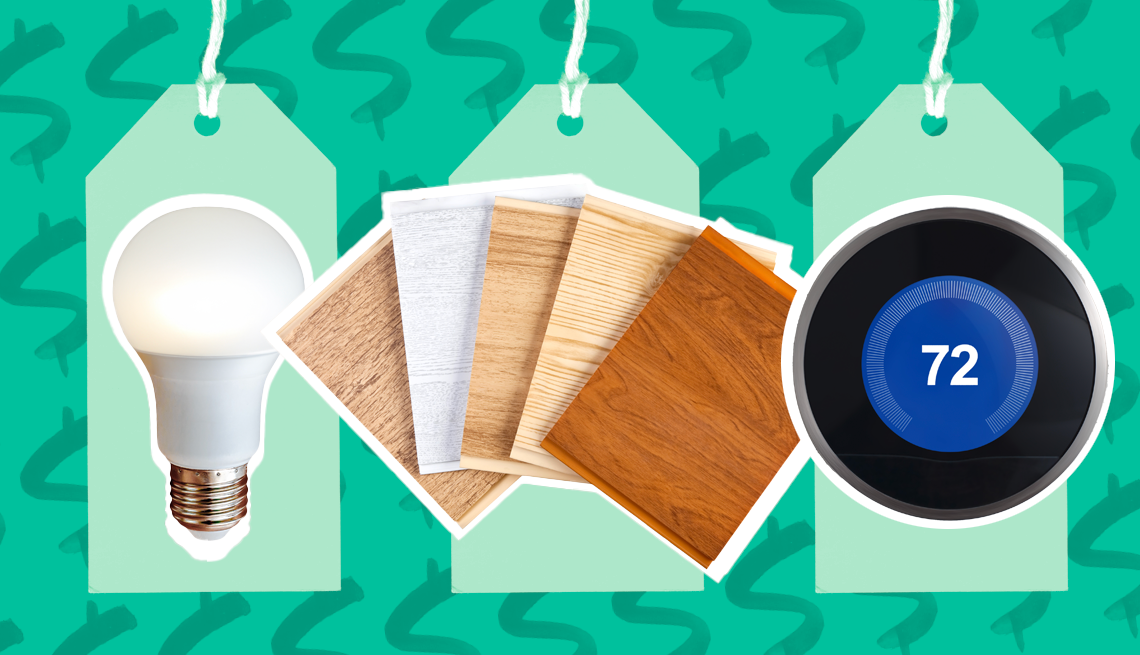AARP Hearing Center


Sometimes a bargain isn’t a bargain if it will cost you more over the long run. That’s particularly true in your home. Sure, buying something on the cheap may seem like a deal, but if you have to fix or replace it, the savings will soon disappear.
“The things you splurge on and invest in should be based on the durability of the item,” says Angie Hicks, co-founder and chief customer officer of Angi (formerly Angie’s List), the home repair referral company. “For structural and mechanical things, you want to buy items that will last.”
But that’s not to say everything in the home is worth a hefty price. For some items, cheaper tends to be the better deal. Often they’re products you will swap out or won’t use much.
With that in mind, here are seven home products where going high-end is worth the investment and five where you’ll be fine with a no-frills option.
7 home items worth the splurge
1. LED light bulbs
Although LED light bulbs typically cost 400 percent more than traditional incandescent bulbs, they tend to be well worth the extra money. Not only do they use as much as 90 percent less energy — they have a 25-times-longer life span. “You might pay more for the bulbs, but they last a heck of a lot longer,” says Hicks. “You save money over the long run, and they’re better for the environment.”
2. Smart thermostat
Properly controlling your home's heating and cooling is a surefire way to keep energy costs down. An easy way to do so is with a smart thermostat. These Wi-Fi-enabled devices let you control your home’s temperature remotely. They cost considerably more than traditional thermostats, with some models running upwards of $500 to $600, but the energy savings — and thus the return on investment — can be significant. You can save 8 percent on energy costs, or about $50 per year on average, according to the U.S. Environmental Protection Agency and the DOE’s Energy Star. Savings may be greater in parts of the country that experience cold and long winters.
“A smart thermostat can control everything in your house to keep you comfy,” says Lisa Davis, a shopping expert at Offers.com. “It can learn your schedule, balance temperatures throughout the day and, best of all, ensure your home will use less energy, saving you money on your electricity bill.”
3. Energy audit
Leaky windows, doors and outlets are only a few of the energy sappers that, left unchecked, can waste a lot of money. That’s why Hicks says an energy audit can be worthwhile. An energy auditor performs a full assessment of your home to identify drafts, temperature inconsistencies, heating and cooling system breakdowns, and any other energy deficiencies. Energy audits cost between $212 and $698 on average, depending on the size of the home and the level of the audit, according to Angi. “An energy audit returns money right away. It’s one of the low-hanging fruits that let you save on every utility bill,” says Hicks.



































































More From AARP
10 New Shopping Trends You Need To Know
Tips for navigating the new world of shopping
Best Bargains at Warehouse Clubs
Save on prescription drugs, hearing aids, eyeglasses
Take 5 Expenses Off the Chopping Block
Don’t stop making these good money moves